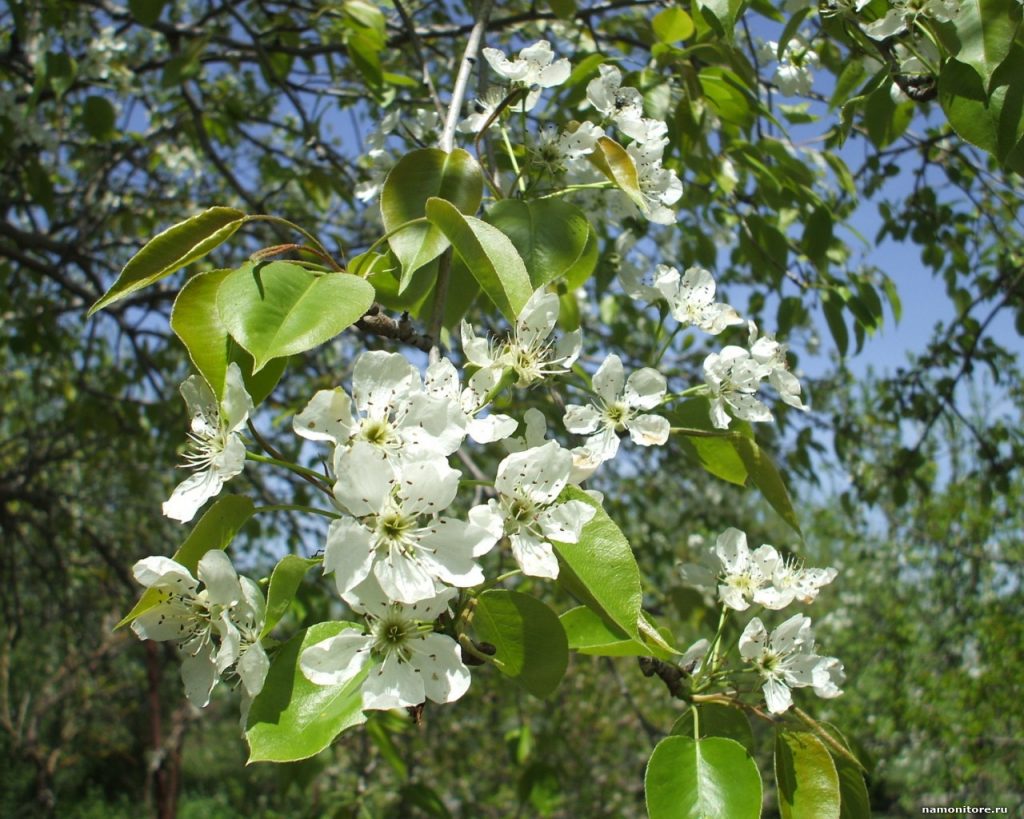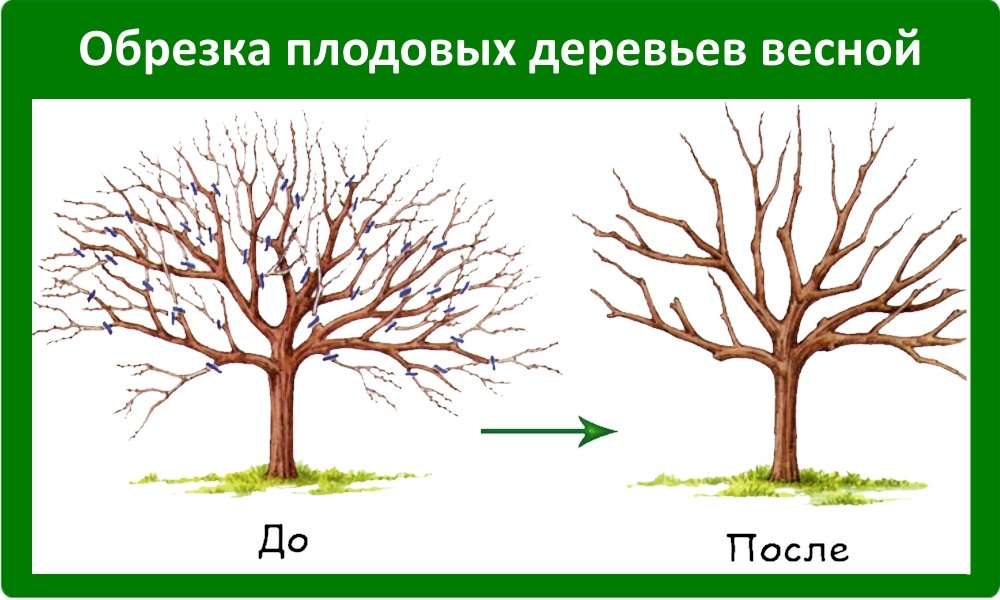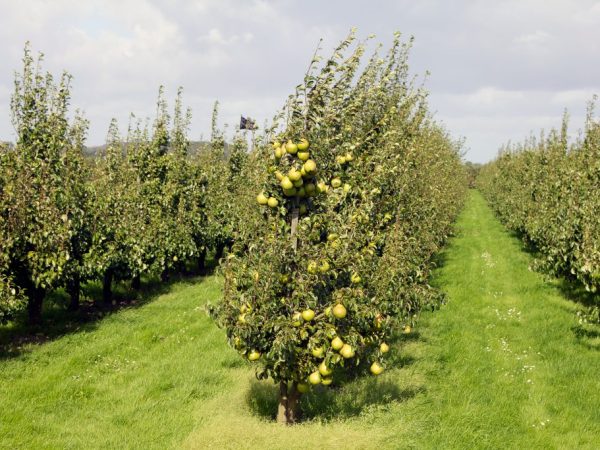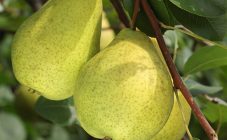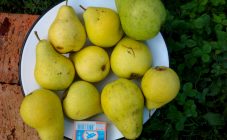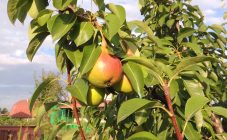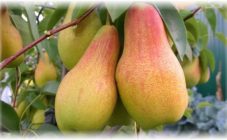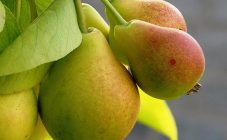Content:
Pears are fruit trees that have always been considered suitable only for a southern climate, mild and warm. However, contrary to the opinion of many amateur gardeners, this plant bears excellent fruit in the central part of Russia, including in Moscow. Breeders have also developed varieties adapted to survive in the harsh Ural winter. One of them is the pear of Sverdlovsk.
Description of pear variety Sverdlovchanka
The pear variety Sverdlovchanka (many call it the Sverdlovskaya pear, but this is incorrect) was created jointly by the Sverdlovsk and Saratov experimental stations. The variety was bred by L.A. Kotov by pollination of Lukashovka field (one of the varieties bred by A.M. Lukashov, bred in 1909) with a mixture of pollen from several southern pear varieties. From the grown seedlings, one four-year-old was selected, propagated by grafting and transferred to G.V. Kondratyeva in a more southern zone in Saratov. Here they worked on it together with the Saratov Agricultural Academy named after V.I. N.I. Vavilov.
Today this variety is most common in its homeland, in the Saratov region. Also, pears have proven themselves well in the Volgo-Vyatka, Central regions and the Urals.
Trees of the Sverdlovchanka variety are of medium height, erect shoots, greenish-brown. In shape and color, the leaves and flowers of this variety do not differ sharply from other pears. The flowers are white, cupped. Flowering of Sverdlovchanka later. Fruit ripening period is autumn-summer. In Saratov and Central Russia, the pear is a late summer variety that ripens at the end of summer.
Pear fruits weigh from 130 to 180 g, smooth, regular shape. In the Urals, this size is quite large. If the pear is removed from the tree, then at the time of maturity it is green - such a fruit is suitable for storage and ripening. Ripe fruits acquire a yellow color, sometimes a reddish blush on the side, green subcutaneous dots are clearly visible. Fruits are juicy, sweet and sour taste. The stalk is strong, as a rule, pears hold well on the tree and, when ripe, do not fall to the ground and have a presentation. The tasters rated Sverdlovchanka at 4.5 points out of 5.
Trees begin to bear fruit quickly enough, from 3-4 years after budding, and does it regularly.
The level of winter hardiness is quite high - a pear can withstand up to -38 ° C, but for the Urals this level is average. To increase winter hardiness, gardeners use additional measures, for example, grafting Sverdlovchanka on a high winter-hardy trunk.
Dwarf pears
Common pears are very tall and take up a lot of space in the garden, but the height makes it difficult to pick up the fruit. Therefore, today more and more varieties are chosen on a semi-dwarf and dwarf rootstock. These plants have all the qualities of the species, but reach a maximum height of 2 m. Up to 8 kg of fruit are removed from one small pear. They can be planted at a short distance, it is enough to leave 2.5 m between the plants. So on one hundred square meters of land, you can grow a whole pear garden.
Seedling selection and planting
It is better to plant a pear in spring or late August - early September, so that the young tree has time to take root before frost. In the northern regions, it is better to do this in the spring. The preference should be given to a seedling in a pot with a closed root system, but today plants with open roots are sold in garden stores, so you need to pay attention to their condition. There should be as many roots as possible, preferably with a small amount of soil in the bag, they should not be dry.
For planting pears, it is better to choose a sunny place. The soil should be sandy-calcareous or sandy, acidic or slightly acidic in pH. The planting hole should, on average, reach a depth of 70 cm and a width of 1 m. The roots of the seedling must be carefully spread at the bottom of the hole, the neck (grafting site) should not be buried more than 5-7 cm. It is better that it be above the ground. Nearby, you need to drive in a strong wooden or metal stake, to which the trunk of the seedling is tied. So a young plant that has not taken root will not be pulled out by a strong wind, and a growing pear will not bend over.
After planting, the tree must be well watered, and abundant irrigation should continue throughout the first year of cultivation. At a time, spill the pear with 2-3 buckets of water. A young plant can be fed with humus, mulching the topsoil. It is also recommended to dig up the soil around the seedling with humus, but this is allowed from the second year after planting, when the root system of the young plant is sufficiently developed and firmly held in the ground.
Further care
The varietal pear content is undemanding, but there are some nuances that it is better to worry about in advance:
Top dressing
Pears have a branched root system, so they do not need to be watered very often - 3-4 abundant waterings over the summer are enough (provided that there is no heat and drought, since in this case additional moistening of the trunk circle will be required).
Mineral (nitrogen and phosphorus) fertilizers are applied every year, and organic fertilizers are applied once every 2-3 years. This can be, for example, watering with an infusion of chicken droppings: 500 g per 10 liters of water is infused for a week, then diluted at a concentration of 1:10 and the trunk circle is shed.
Pruning
Each year, the tree must be pruned by removing the fattening shoots and thinning the crown. Pruning should be carried out in late autumn at a temperature of 0-5 ° C or in early spring, in March, before active sap flow begins. It is better to cut off the branches with a pruner or saw under the base, without leaving "hemp". In order for a pear to have one well-formed trunk, all shoots, shoots are cut at a height of up to 1 m from the ground. How to trim further depends on the tastes of the gardener. There are several schemes for filing pears: tierless and whorled-tier crown formation. With both methods, the main conductor trunk is cut at a height of 3 - 3.5 m.
Pests and diseases
The Sverdlovchanka variety is characterized as resistant to pests and viral diseases, even to scab and rust, however, in order to completely prevent them, a number of measures must not be neglected:
- the trunk circle of the pear needs to be cleaned of weeds and loosened, especially in a young plant;
- there should not be tall vegetation in the area around the tree, but, on the contrary, well ventilated;
- in the fall, you need to collect fallen leaves, it is advisable to burn it as early as possible, since it often becomes a wintering place for viruses and pear pests;
- fallen fruits must be removed in a timely manner, because they can become a breeding ground for fruit rot (moniliosis) - rounded soft brown spots with concentric convex white stripes, leading to the death of the fetus;
- for the prevention of diseases, the pear is sprayed with fast and kinmix preparations.They treat most diseases, the main thing is to dilute the funds strictly according to the instructions attached to the package.
Advantages and disadvantages of the variety
The advantages of the Ural variety include good taste, relative frost resistance, and resistance to pests.
There are not so many disadvantages in Sverdlovchanka: the inability to bear fruit in the absence of a pollinator (the species is not self-fertile) and instability to very low temperatures. The pear will not be able to grow in the northern regions, where the temperature drops below -38 ° C. For such conditions, the Svetlyanka, Severyanka, Fabulous varieties are better suited. Their main characteristic is absolute winter hardiness. However, if all other conditions are favorable for Sverdlovchanka (lighting, soil type), then even a novice gardener will be able to grow it.

